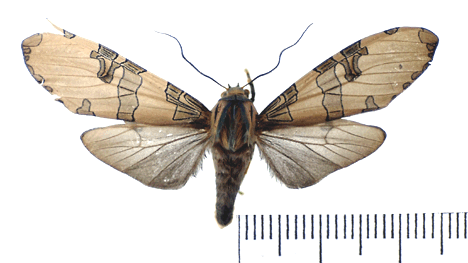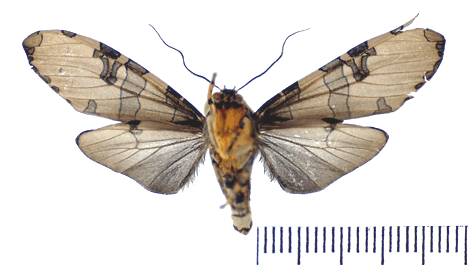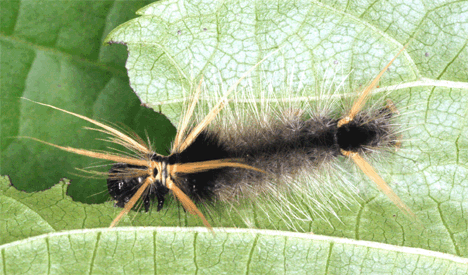LIFE HISTORY
DATA
|
Caterpillar
common name:
|
-
- "Leones de Higo"
- "Orange spine pelos
negros"
- "Orange spikey white
Fluff"
- "Spikey white
Fluft"
|
Caterpillar
behavior & description:
|
-
- Early and middle instars
have a bright pink ground color and sparser secondary
setae, and look completely different from the later
instar caterpillar.
|
Rearing results
and development time:
|
-
-
|
|
Host
plants:
|
- Nectandra species
(Lauraceae)
- Erythrina edulis,
(Fabaceae)
- Desmodium sp.
(Fabaceae)
- Juglans sp.
(Juglandaceae)
- Rubus sp.
(Rosaceae)
- Werklia ferox
(Malvaceae)
- Chusquea scandens
(Poaceae)
- Piper baezanum
(Piperaceae)
- Piper sp.
(Piperaceae)
- Castilla sp.
(Moraceae)
|
Parasitoids:
|
- The larvae are parasitized
individually by Distatrix spp. (Braconidae:
Microgastrinae) and unknown tachinid flies; both the
braconids and tachinids develop internally and pupate
outside of the host.
|
Predators:
|
|
Collection
sites:
|
-
- Caterpillars were collected
inside primary forests, partially reforested pastures and
next to roads along an altitudinal transect from 400m
(Tena) to 3500m (Papallacta) in the vicinity of the
Yanayacu Biological Station and Center for Creative
Studies (YBS: S 00° 35.9' W 77° 53.4': 2100 m),
5km west of Cosanga, Napo province of eastern Ecuador.
|
Voucher locations
& numbers:
|
-
- @ American Museum of
Natural History : : H09-2272, A170 ??prob.
reared??, unlogged "Harolds Erythrina Lions, eclosed,
(3), unlogged "Harolds Erythrina Lions, eclosed, (2),
1956, 2088, 2089, 26293, 26295, 26296, 37627, 37804,
38258
- @University of Nevada
Reno (UNR): unlogged "Harolds Erythrina Lions,
eclosed (2), Harolds Erythrina Lions (not logged in),
From large jar & many cocoons
|
Adult
identification status:
Dissections:
|
-
- Compared with male
Holotype No. 34414 U.S.N.M., slide AW287.
-
- Specimens dissected by
S. Rab Green:
- Reared male # 2089 located
@ , genitalia slide SRG #198
|
Original description
of adult:
|
- Watson, A. 1980. A
revision of the Halysidota tesselaris species-group.
Bulletin of the British Museum (Natural History) (Ent.)
40: 45.
|
Type
location:
|
- Peru
|
Known distribution
range:
|
|
|
|
|





